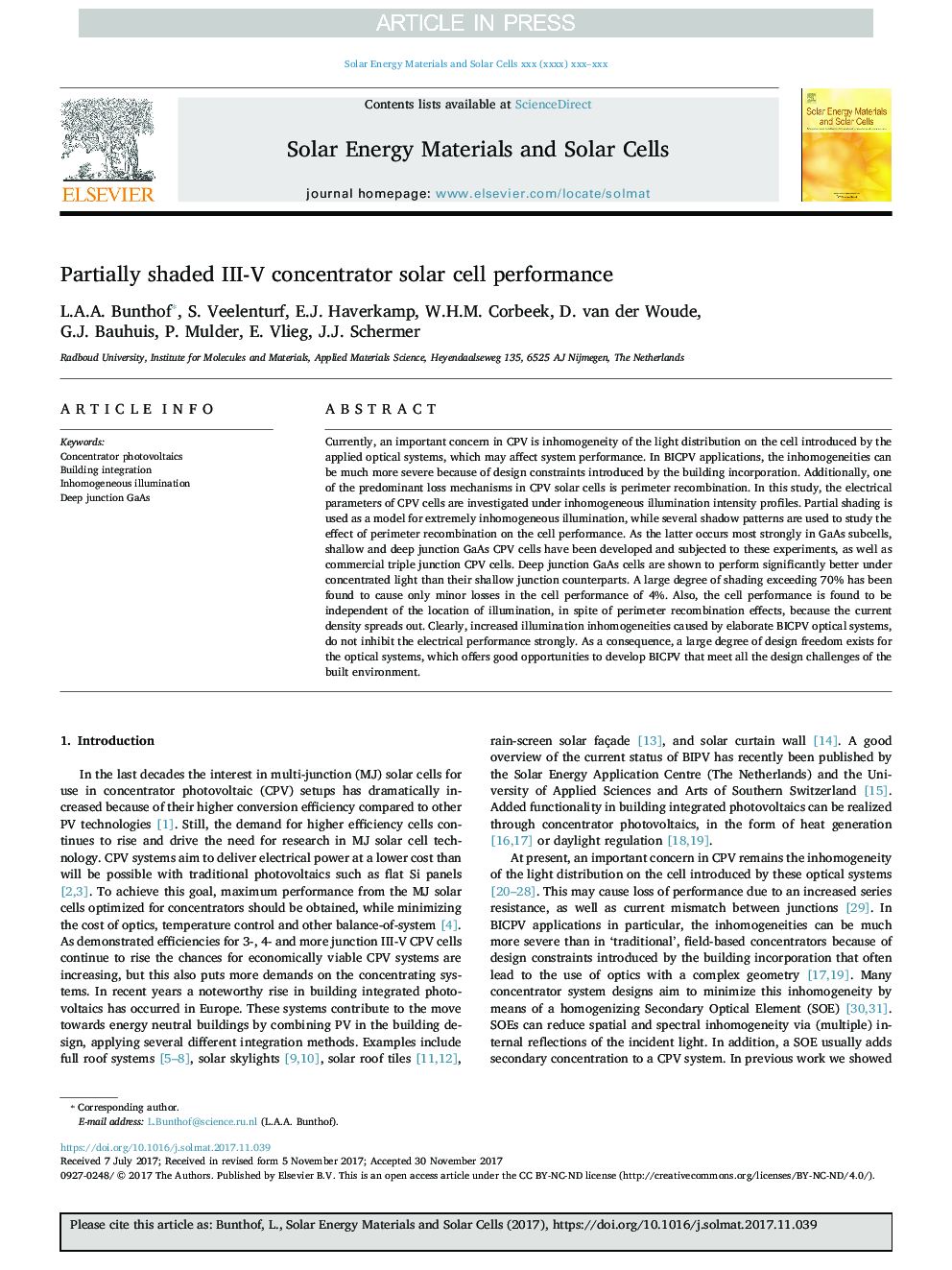| Article ID | Journal | Published Year | Pages | File Type |
|---|---|---|---|---|
| 6534293 | Solar Energy Materials and Solar Cells | 2018 | 10 Pages |
Abstract
Currently, an important concern in CPV is inhomogeneity of the light distribution on the cell introduced by the applied optical systems, which may affect system performance. In BICPV applications, the inhomogeneities can be much more severe because of design constraints introduced by the building incorporation. Additionally, one of the predominant loss mechanisms in CPV solar cells is perimeter recombination. In this study, the electrical parameters of CPV cells are investigated under inhomogeneous illumination intensity profiles. Partial shading is used as a model for extremely inhomogeneous illumination, while several shadow patterns are used to study the effect of perimeter recombination on the cell performance. As the latter occurs most strongly in GaAs subcells, shallow and deep junction GaAs CPV cells have been developed and subjected to these experiments, as well as commercial triple junction CPV cells. Deep junction GaAs cells are shown to perform significantly better under concentrated light than their shallow junction counterparts. A large degree of shading exceeding 70% has been found to cause only minor losses in the cell performance of 4%. Also, the cell performance is found to be independent of the location of illumination, in spite of perimeter recombination effects, because the current density spreads out. Clearly, increased illumination inhomogeneities caused by elaborate BICPV optical systems, do not inhibit the electrical performance strongly. As a consequence, a large degree of design freedom exists for the optical systems, which offers good opportunities to develop BICPV that meet all the design challenges of the built environment.
Related Topics
Physical Sciences and Engineering
Chemical Engineering
Catalysis
Authors
L.A.A. Bunthof, S. Veelenturf, E.J. Haverkamp, W.H.M. Corbeek, D. van der Woude, G.J. Bauhuis, P. Mulder, E. Vlieg, J.J. Schermer,
